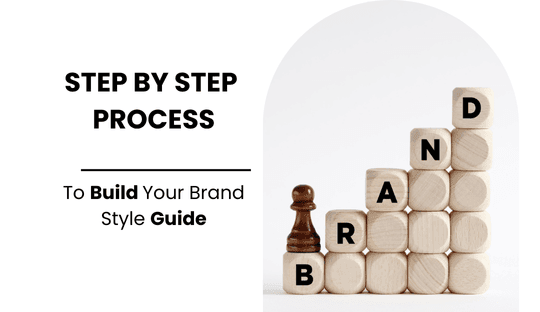
Step-by-Step Process to Build Your Brand Style Guide
Introduction
A brand style guide is an essential tool for maintaining brand consistency and ensuring that all marketing materials align with the brand’s identity. For Flykez CO, a creative brand company in Denmark, a well-crafted brand style guide can enhance brand recognition and ensure cohesive communication across all platforms. This article provides a step-by-step process to build an effective brand style guide.
Step 1: Define Your Brand’s Core Elements
Mission, Vision, and Values
Start by clearly defining your brand’s mission, vision, and values. These core elements form the foundation of your brand identity and guide all branding efforts. They should reflect what your brand stands for and its long-term goals.
Brand Personality
Determine your brand’s personality traits. Is your brand professional, playful, innovative, or traditional? These traits will influence the tone of your communications and the visual style of your brand.
Step 2: Create Logo Usage Guidelines
Logo Variations
Include all acceptable variations of your logo, such as full-color, black and white, and monochrome versions. Specify when and where each variation should be used.
Clear Space and Size
Define the minimum clear space around the logo to ensure it is not cluttered by other design elements. Also, specify the minimum and maximum sizes at which the logo should be displayed to maintain legibility and impact.
Incorrect Usage
Provide examples of incorrect logo usage, such as stretching, altering colors, or adding effects. This helps prevent misuse and ensures the logo remains consistent.
Step 3: Develop a Color Palette
Primary and Secondary Colors
List your brand’s primary and secondary colors with their exact color codes (hex, RGB, and CMYK). This ensures that colors are used consistently across all digital and print media.
Color Usage
Explain how and when to use each color. Provide examples of color combinations that work well together and those that should be avoided. This helps maintain a cohesive visual identity.
Step 4: Establish Typography Guidelines
Font Choices
Specify the primary and secondary fonts used in your branding. Include font names, styles, and sizes for different types of text, such as headings, subheadings, and body text.
Font Usage
Provide guidelines on how to use each font, including line spacing, alignment, and capitalization. This ensures that all written materials are visually consistent and easy to read.
Step 5: Define Visual Elements
Imagery Style
Describe the style of imagery that represents your brand, including photo quality, color tone, and subject matter. Provide examples of approved images and those that do not fit the brand’s style. Also Read About How to Measure the Success of Your Rebrand
Iconography
Include guidelines for using icons, such as preferred styles, sizes, and colors. Consistent use of icons can enhance visual communication and reinforce brand identity.
Step 6: Outline Print Media Guidelines
Paper and Printing Specifications
Specify the types of paper and printing techniques that should be used for different print materials, such as business cards, brochures, and posters. This ensures high-quality and consistent print outputs.
Layout and Design
Provide layout templates and design grids for print materials. This helps maintain a consistent look and feel across all printed assets.
Step 7: Define Digital Media Guidelines
Website and Social Media
Include guidelines for website design, such as layout, navigation, and user experience (UX) standards. Also, provide rules for social media profiles, including profile pictures, cover images, and post designs.
Email Marketing
Specify the design and layout of email templates, including header and footer styles, font choices, and color usage. This ensures that all email communications are on-brand and visually appealing.
Step 8: Establish Brand Voice and Tone
Voice Characteristics
Describe the key characteristics of your brand’s voice, such as friendly, professional, or authoritative. This ensures that all written content reflects the brand’s personality.
Tone Variation
Explain how the tone should vary depending on the context and audience. For example, the tone of a social media post may be more casual than that of a corporate report.
Step 9: Create Usage Examples
Real-World Applications
Provide real-world examples of how to apply the brand guidelines in various contexts, such as social media posts, website pages, and print advertisements. This helps users understand how to implement the guidelines effectively.
Do’s and Don’ts
Include a list of do’s and don’ts for each section of the style guide. This provides clear instructions on what to follow and what to avoid, ensuring consistent application of the guidelines.
Conclusion
Building a comprehensive brand style guide is crucial for maintaining a consistent and impactful brand identity. For Flykez CO, following these steps will ensure that all brand elements are used correctly and cohesively, enhancing brand recognition and trust. By defining core elements, establishing clear guidelines, and providing practical examples, you can create a robust brand style guide that supports your business goals.
For more information on how Flykez CO can help with your branding needs, visit www.flykez.com.
